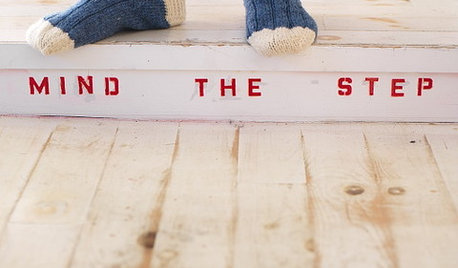Tried to make a knit jammie top, and this neckline is yucky too
bayareafrancy
14 years ago
Related Stories

HOUSEKEEPINGChoose Your Own Spring Cleaning Plan
Instead of trying to do it all, pick one of these six cleaning approaches that’s right for you now
Full Story
COLORHow to Use Marsala, Pantone’s 2015 Color of the Year
Pantone digs deep and goes earthy with its selection. Here are ways to make it work in your home
Full Story
HOUSEKEEPING10 Tips to Streamline Laundry Day
Little adjustments to your attitude and routine can help take the wrinkles out of doing the wash
Full Story
STORAGE9 Ways to Avoid a ‘Floordrobe’ in Your Bedroom
Repeat after me: The floor isn’t storage space for clothes! Tackle the ‘floordrobe’ effect with these smart tips
Full Story
LIFESimple Pleasures: Spoil Yourself
Renew your spirit by indulging in treats, quiet time and letting someone else do your chores for once
Full Story
LIFEHouse Rule: Off With Your Shoes
Do you prefer your guests to go shoeless in your house? Here are some ways to encourage stockinged feet
Full Story
PETSThe Best of My Houzz: 50 Design-Loving Pets
Share in the animal love with snapshots of adorable furry friends from our My Houzz series
Full StorySponsored
More Discussions






kathi_mdgd
sheesh
Related Professionals
Chambersburg Furniture & Accessories · Eagan Furniture & Accessories · Easton Furniture & Accessories · Miami Furniture & Accessories · Paramus Furniture & Accessories · Annandale Furniture & Accessories · San Juan Capistrano Furniture & Accessories · North Bellmore Furniture & Accessories · View Park-Windsor Hills Interior Designers & Decorators · Memphis Furniture & Accessories · Sioux Falls Furniture & Accessories · Gages Lake Furniture & Accessories · Sugar Hill Furniture & Accessories · Short Hills Furniture & Accessories · Keller Staircases & Railingskathyg_in_mi
sheesh
sheesh
carolb_w_fl_coastal_9b
sheesh
dee_can1
bayareafrancyOriginal Author
sewnotperfect
biwako_of_abi
glosews